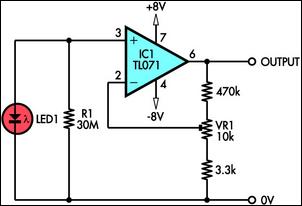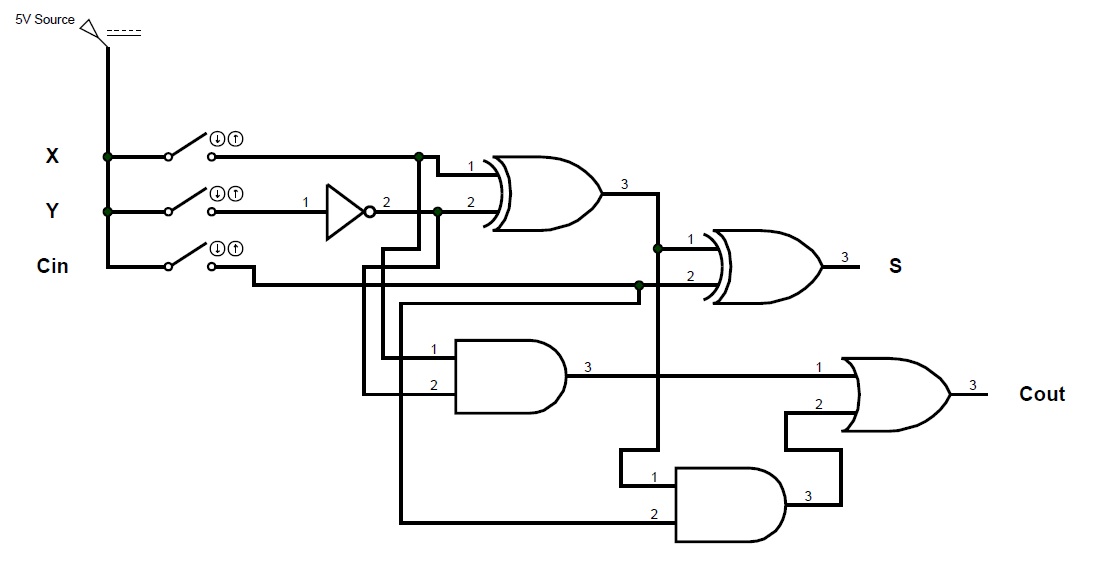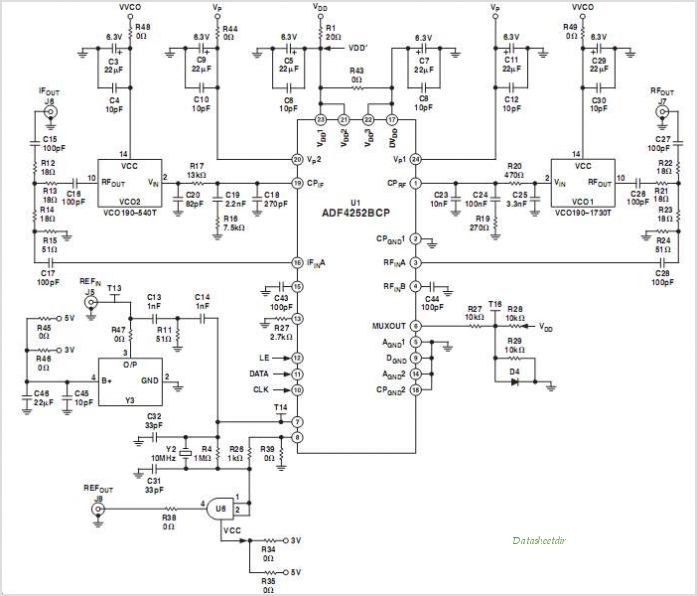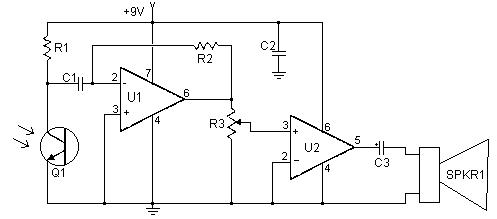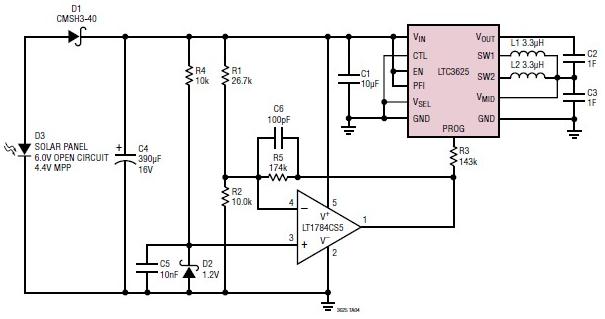
3-Output Isolated Flyback RegulatorCircuit using LM2577
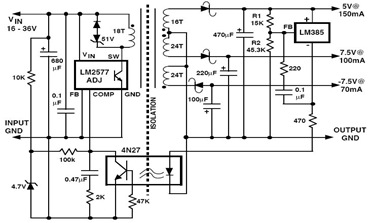
The following figure illustrates an example of a three-output flyback regulator constructed using the LM2577, which features electrical isolation between the input and output voltages. The circuit diagram specifies a voltage of 5V. Electrical isolation between the input and output terminals of the power supply is essential for medical instruments to ensure patient safety. In the flyback regulator circuit, the output voltage can be greater than, less than, or equal to the input voltage (source: national.com).
The three-output flyback regulator utilizing the LM2577 is designed to provide stable and isolated DC output voltages, making it suitable for applications in medical devices where safety is paramount. The LM2577 is a step-up (boost) converter that can efficiently convert a lower input voltage to a higher output voltage while maintaining electrical isolation. This is achieved through the use of a transformer in the flyback topology, which not only allows voltage conversion but also provides the necessary isolation between the input and output.
In this configuration, the primary winding of the transformer is connected to the input voltage, while the secondary windings are connected to the output loads. The LM2577 controls the switching of the transistor that drives the primary winding, creating a magnetic field in the transformer. When the transistor turns off, the collapsing magnetic field induces a voltage in the secondary windings, which can be rectified and filtered to provide the desired output voltage levels.
The circuit typically includes additional components such as diodes for rectification, capacitors for filtering, and resistors for voltage sensing and feedback control. The output voltage can be adjusted by selecting appropriate turns ratios for the transformer and by configuring feedback resistors to set the desired output levels. This flexibility allows the flyback regulator to cater to various load requirements while ensuring that the output is isolated from the input, thereby protecting sensitive components and users from potential electrical hazards.
In summary, the three-output flyback regulator using the LM2577 is a robust solution that meets the stringent safety requirements of medical applications, providing reliable and isolated voltage outputs suitable for powering critical medical instruments.The following figure shown an example of a three-output flyback regulator built using LM2577 that has electrical isolation between the input and output voltages. The values shown in the circuit diagram will be 5V for the voltage. An electrical isolation is required between the input and output terminals of the power supply for such medical instrum
ents which require it to assure the safety of patients. In theFlyback Regulator circuit, the output may be greater than, less than, or equal to the input voltage (source: national. com) 🔗 External reference
The three-output flyback regulator utilizing the LM2577 is designed to provide stable and isolated DC output voltages, making it suitable for applications in medical devices where safety is paramount. The LM2577 is a step-up (boost) converter that can efficiently convert a lower input voltage to a higher output voltage while maintaining electrical isolation. This is achieved through the use of a transformer in the flyback topology, which not only allows voltage conversion but also provides the necessary isolation between the input and output.
In this configuration, the primary winding of the transformer is connected to the input voltage, while the secondary windings are connected to the output loads. The LM2577 controls the switching of the transistor that drives the primary winding, creating a magnetic field in the transformer. When the transistor turns off, the collapsing magnetic field induces a voltage in the secondary windings, which can be rectified and filtered to provide the desired output voltage levels.
The circuit typically includes additional components such as diodes for rectification, capacitors for filtering, and resistors for voltage sensing and feedback control. The output voltage can be adjusted by selecting appropriate turns ratios for the transformer and by configuring feedback resistors to set the desired output levels. This flexibility allows the flyback regulator to cater to various load requirements while ensuring that the output is isolated from the input, thereby protecting sensitive components and users from potential electrical hazards.
In summary, the three-output flyback regulator using the LM2577 is a robust solution that meets the stringent safety requirements of medical applications, providing reliable and isolated voltage outputs suitable for powering critical medical instruments.The following figure shown an example of a three-output flyback regulator built using LM2577 that has electrical isolation between the input and output voltages. The values shown in the circuit diagram will be 5V for the voltage. An electrical isolation is required between the input and output terminals of the power supply for such medical instrum
ents which require it to assure the safety of patients. In theFlyback Regulator circuit, the output may be greater than, less than, or equal to the input voltage (source: national. com) 🔗 External reference
